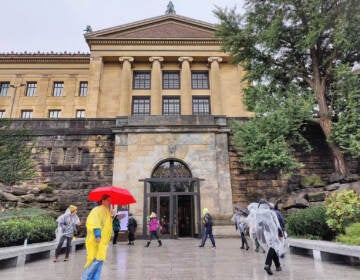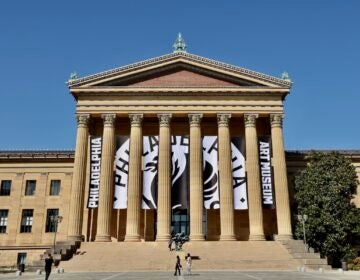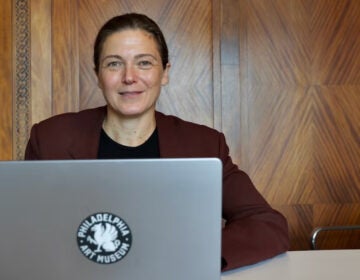After 17 days, the Art Museum director acknowledges striking workers
Sasha Suda started as PMA director the day the workers went on strike. Both sides hope to resolve a first contract when the new Matisse show opens.
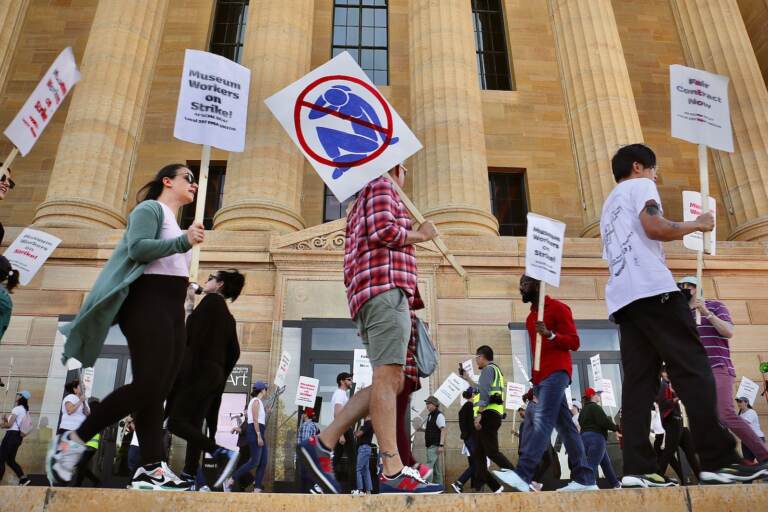
Union members picket outside the West entrance to the Philadelphia Museum of Art while the museum hosts a press preview of an upcoming Matisse exhibit. (Emma Lee/WHYY)
On Wednesday the new director of the Philadelphia Museum of Art, Sasha Suda, publicly acknowledged for the first time the museum worker’s strike that began 17 days before.
“I know that unions can and will work in partnership with management to ensure a thriving institution that’s also a safe and sustainable employer,” Suda said to a roomful of about 50 journalists and critics gathered for a preview of the new exhibition “Matisse in the 1930s.”
“We’ll get there in time. I can only hope that the coming days will bring us together and that we can all reflect on the past few years as an immovable block of history,” she said.
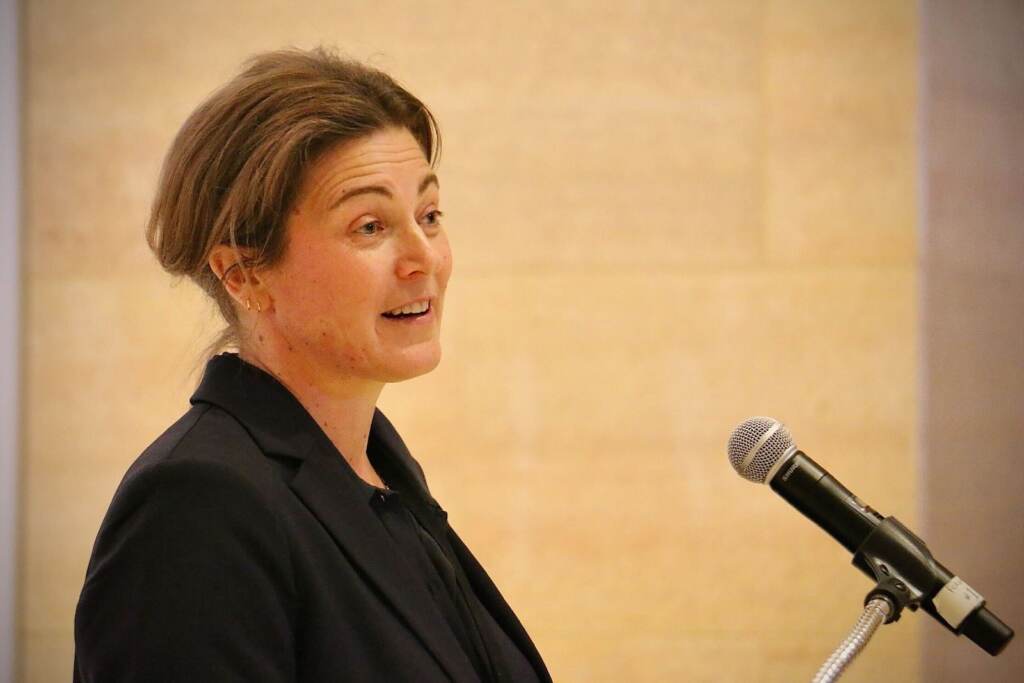
Suda’s first day on the job was September 26th, the first day of the strike. She has never addressed the union directly.
On Wednesday a junket of art journalists, many from out of town, came to both the Barnes Foundation and the PMA to preview their respective upcoming exhibitions. At the PMA they had to cross a picket line of several dozen striking workers to get inside.
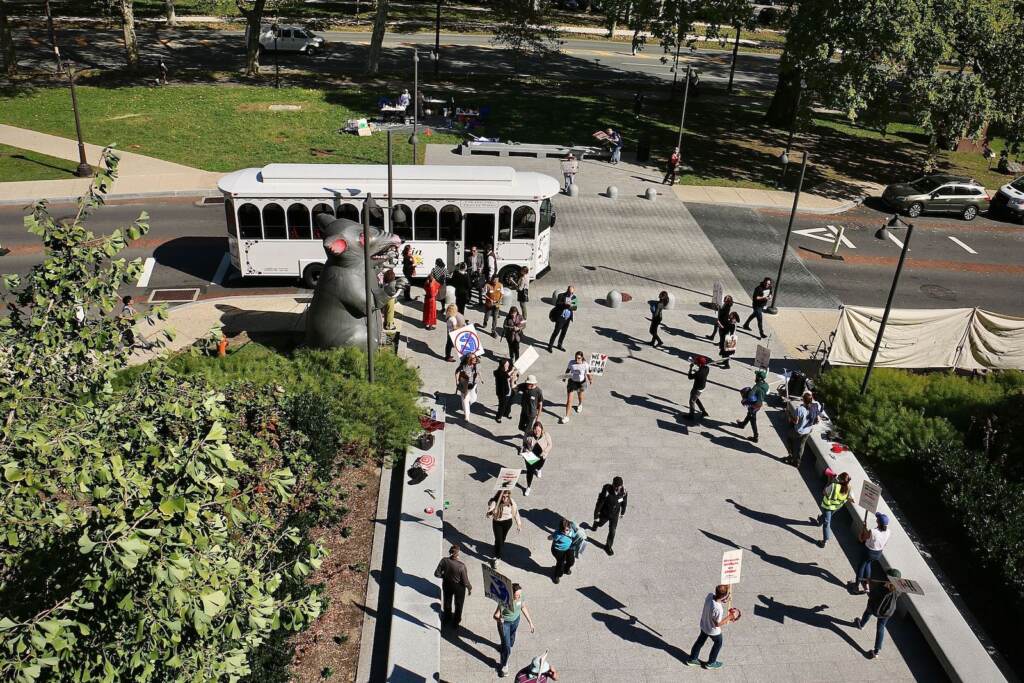
Inside over lunch, Suda told the journalists that her first two weeks on the job have been “an intense period, as you can imagine, of observation, listening, and sensing what the future of the organization can and will be.”
“I know that the PMA board and leadership believes that PMA employees are the foundation for its future,” Suda said. “This is a conversation that’s been going on long before the 12 days that I’ve been on the ground.”
The opening of “Matisse in the 1930s” has been a line in the sand for both the museum and the union. It is the first major loan exhibition the PMA has put together since the pandemic, in development for the last seven years in partnerships with two overseas institutions: the Musée de l’Orangerie in Paris and the Musée Matisse Nice.
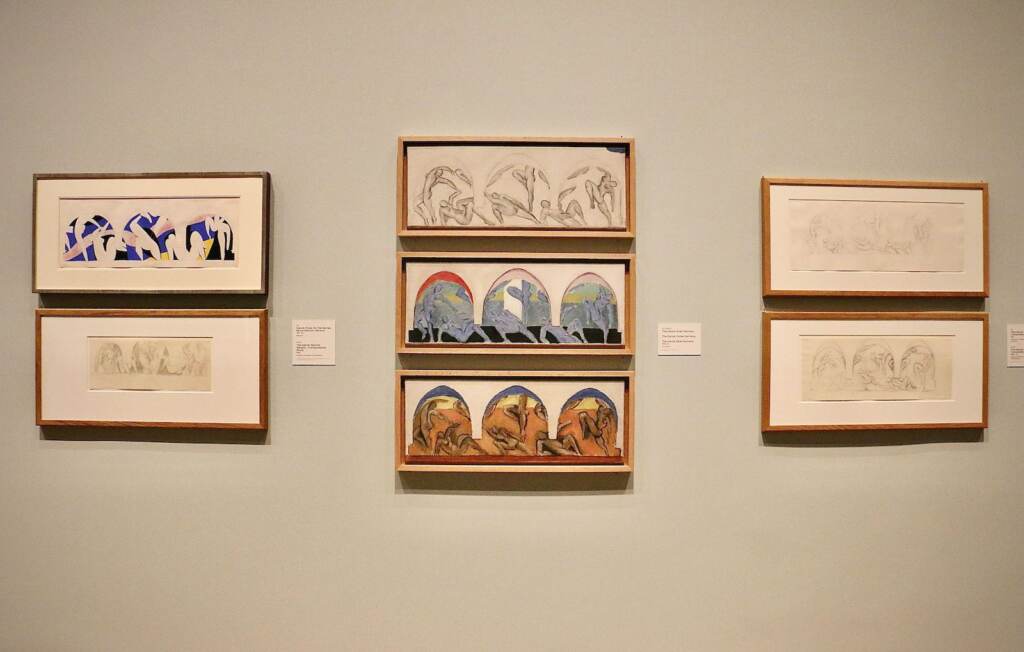
“Matisse in the 1930s” features about 140 works by the beloved French modernist tracking a transformative period in his life and work, in part spurred by a key mural commission in Philadelphia at the Barnes Foundation. The PMA will be the only U.S. museum to host the exhibition.
The museum union has been using the Matisse exhibition as a rallying cry during protests, chanting “No justice, no peace. No contract, no Matisse.”
Adam Rizzo, president of the union with AFSCME District 47, said that in order to receive and prepare the Matisse paintings for exhibition, the museum had to hire non-staff art handlers to cross the picket line.
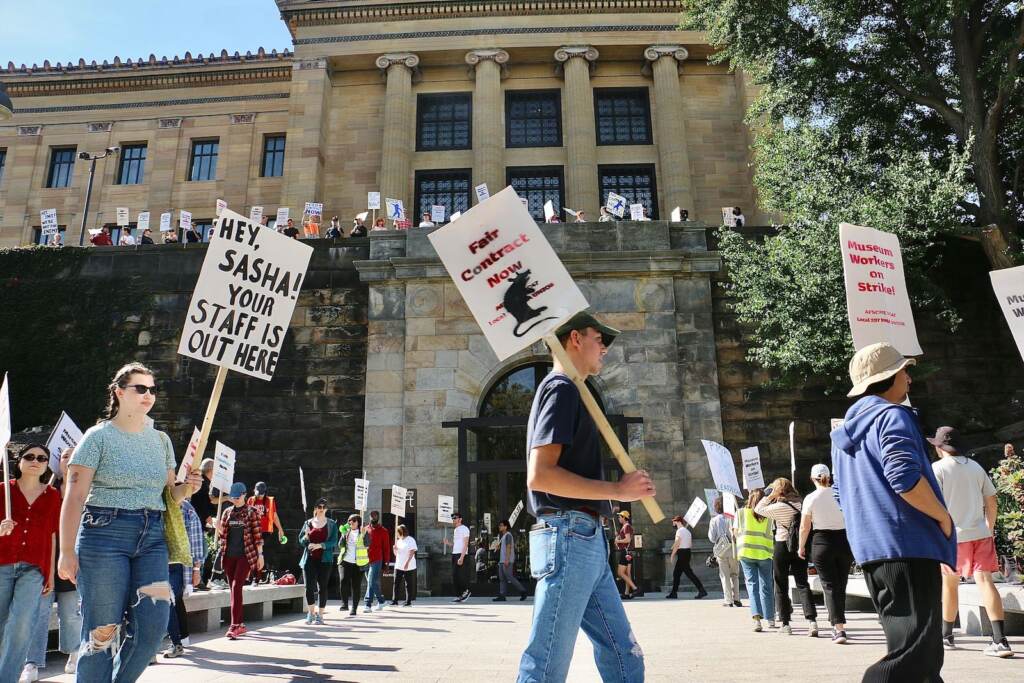
“They maintain that the installation is on schedule, and they were able to get the show hung on time and without interruption,” Rizzo said. “They did that by hiring scabs from outside. I am personally concerned for the museum’s relationships with lenders moving forward based on what they did.”
The union is asking for a minimum wage of $16.75; raises across the board in response to wage stagnation and inflation; making raises retroactive to July 1, when non-union staff received raises; and decreasing the cost of health insurance.
The museum has offered raises up to 11% by 2024, four weeks of paid parental leave, accelerated health benefits eligibility for new employees, and job security protections.
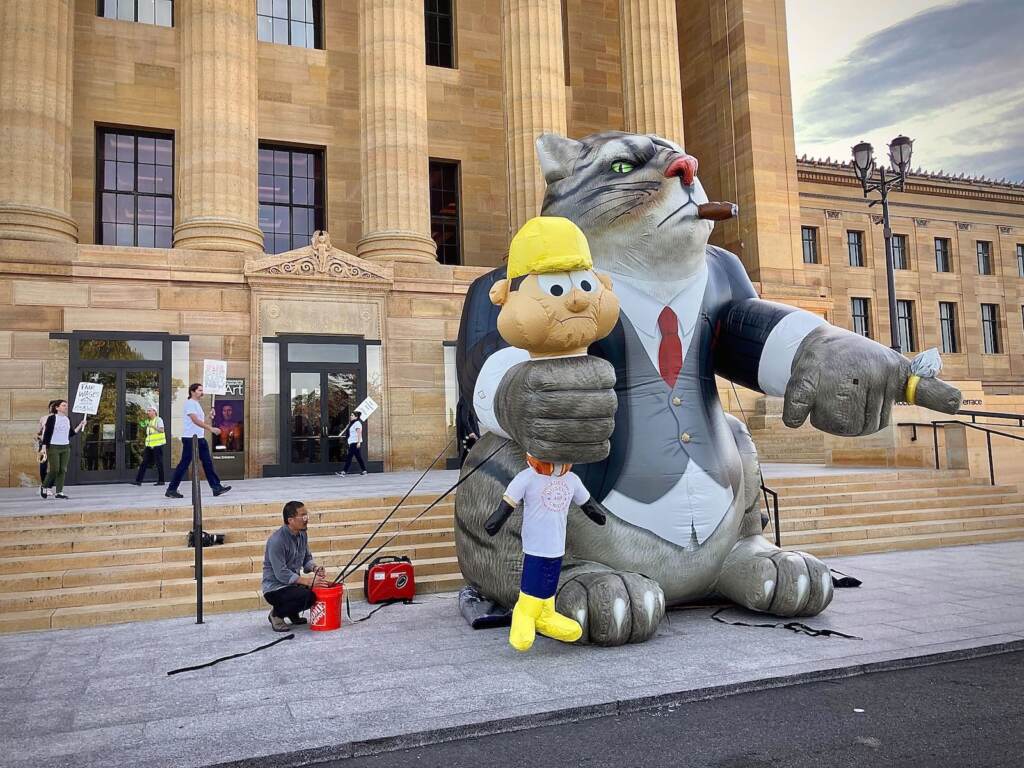
Recently retired AFSCME president Catherine Scott, who remains involved with negotiations, said elected officials in Philadelphia City Hall have stepped in to jump-start a stalled negotiation process, which has “moved the needle.” She said only now, after two years of negotiating, is the museum crunching a cost analysis of the worker’s proposals.
The Matisse show opens to the public on Thursday, October 20, with a gala event in advance this Saturday, October 15. If contract negotiations are not resolved by then, the union plans to make a large presence outside the gala.
“We’ll be out here with hundreds of supporters who have agreed to support us, and come out and just clog up this whole street,” said Rizzo. “And have our own little block party while the donors and trustees are inside having their gala celebration of Matisse.”
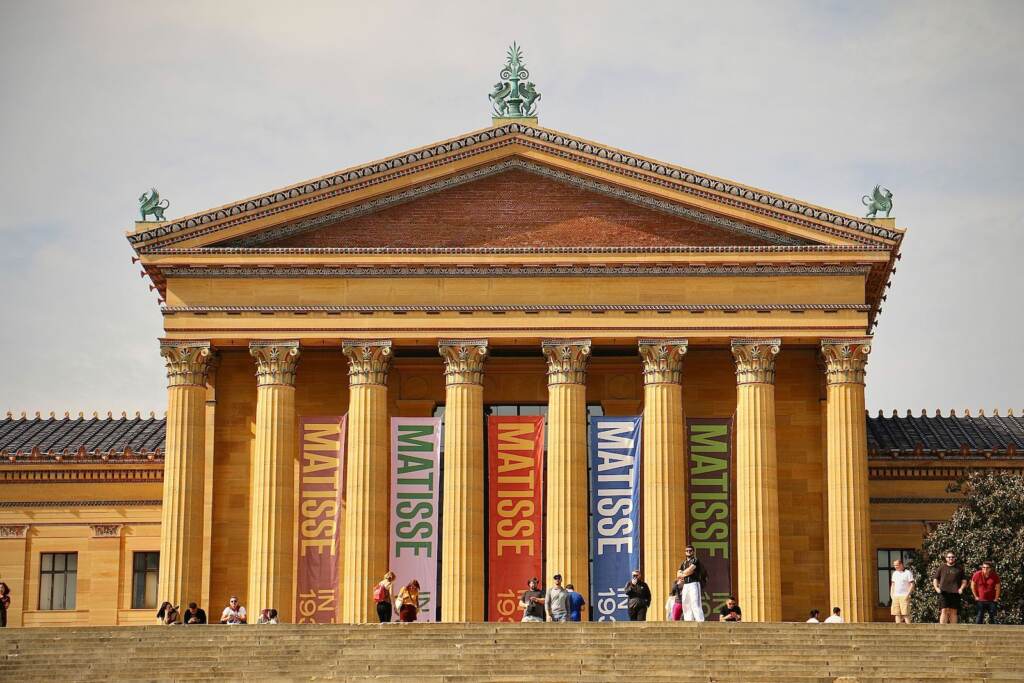
WHYY is your source for fact-based, in-depth journalism and information. As a nonprofit organization, we rely on financial support from readers like you. Please give today.



